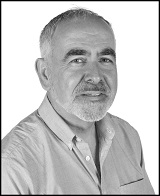 It is over 40 years since Engel described the biopsychosocial model for medicine, largely adopted in principle by the healthcare establishment if, as with most good intentions, imperfectly executed in practice. [1] Yet it is still all too common to hear non-physician healthcare professionals casually refer in a pejorative sense to “medicalised” healthcare.
It is over 40 years since Engel described the biopsychosocial model for medicine, largely adopted in principle by the healthcare establishment if, as with most good intentions, imperfectly executed in practice. [1] Yet it is still all too common to hear non-physician healthcare professionals casually refer in a pejorative sense to “medicalised” healthcare.
But what is the malign element that other professionals label as medicalisation? As a geriatrician working with a multidisciplinary team, where chairing of our management advisory group rotates between disciplines, I remain puzzled. Pinning down a definition for the term is problematic, but as it seems to strike an uncritiqued chord in both professional and public debates, it is worth teasing out what is at issue. [2]
Among the candidates that come to mind are rigid task-oriented care, uncompassionate care, poor communication, and disequilibrium of the biopsychosocial care model. The latter is illustrated by older people in hospitals who are often short-changed on the psychosocial aspects of healthcare, and older people in nursing homes who are correspondingly short-changed on the biomedical elements. These unhappy patterns of care are not respecters of disciplines: for example, for what such measures are worth, doctors and nurses score similarly on estimates of empathy, and presumably therefore deficits in empathy. [3] So what is being decried is poor care rather than a fault of the intentions of modern medicine.
A subset of this dysfunctional approach is “pharmacologised” medicine, another manifestation of disequilibrium of the biopsychosocial model. An irony of this aspect is that the general public, in the emotional debates fuelled by pharmacological companies relating to new and expensive medications of relatively low efficacy, seem to clamour for pharmacological or technological interventions that will jeopardise the funding for the elements needed to provide the complementary social and psychological elements of care. Even artists in healthcare seem to be drawn into this paradigm by seeking to use pharmacological models to display the worth of their activities rather than promoting the benefits of aesthetic supports in their own right. [4]
Other wellsprings for castigating “medicalisation” arise from power balances and struggles between the professions. From a historical perspective there are ironies in this in that many of the healthcare professions whose members refer pejoratively to “medicalisation” were themselves promoted actively by the medical profession and supported in their early development. [5] Indeed other professions might reflect on how they might welcome the use of terms such as “nursised” or “health-economised” healthcare for their professional philosophy and practice in our interprofessional discourse.
At the heart of promoting good interprofessional relationships is the concept of respect in thought, deed, and word. As doctors, we should be more proactive in diplomatically, but firmly, challenging the indiscriminate use of the term “medicalisation” by other healthcare professionals in our shared spaces. Yet we should also be open to robust inquiry of any disruptive or inadequate element of care, competence, or communication that lies at the heart of their use of the term when adequately dissected and explained.
Desmond O’Neill is a consultant geriatrician and co-chair of the Medical and Health Humanities Initiative of Trinity College Dublin.
References
[1] Engel GL. The need for a new medical model: a challenge for biomedicine. Science. 1977;196:129-36.
[2] Correia T. Revisiting medicalization: a critique of the assumptions of what counts as medical knowledge. Frontiers in Sociology. 2017;2:14.
[3] Fields SK, Hojat M, Gonnella JS, Mangione S, Kane G, Magee M. Comparisons of nurses and physicians on an operational measure of empathy. Eval Health Prof. 2004;27:80-94.
[4] de Medeiros K, Basting A. “Shall I compare thee to a dose of donepezil?”: cultural arts interventions in dementia care research. Gerontologist. 2014;54:344-53.
[5] Cullen LT. The first lady almoner: the appointment, position, and findings of Miss Mary Stewart at the Royal Free Hospital, 1895–99. Journal of the history of medicine and allied sciences. 2012;68:551-82.
